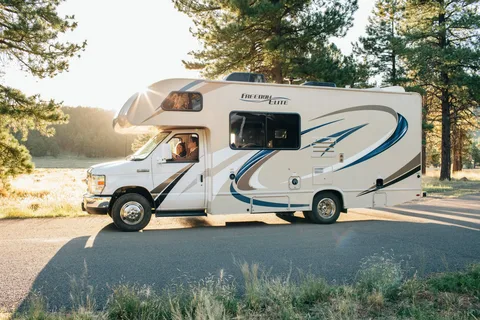Introduction:
Recreational vehicles (RVs) offer a unique way to travel and explore the great outdoors, providing comfort, convenience, and flexibility for adventurers of all types. However, just like any other vehicle, RVs require insurance coverage to protect against potential risks and liabilities on the road. RV insurance options encompass a range of coverage choices tailored to the diverse needs of RV owners, from motorhomes and travel trailers to camper vans and fifth wheels. In this SEO-friendly article, we’ll delve into the world of RV insurance, exploring coverage options, factors affecting premiums, tips for finding the right policy, and ensuring peace of mind on your next journey.
Understanding RV Insurance Options:
RV insurance provides financial protection for RV owners against various risks and liabilities, including accidents, theft, vandalism, and property damage. RV insurance options typically include coverage for both the vehicle itself and personal belongings stored inside, as well as liability coverage for bodily injury and property damage to third parties.
Types of RV Insurance Coverage:
RV insurance policies may include several types of coverage options to address the unique needs of RV owners and their vehicles:
- Liability Coverage: Liability coverage protects RV owners against financial liabilities for bodily injury and property damage caused by the insured RV to third parties. It covers legal expenses, court judgments, and settlement costs for liability claims arising from accidents or incidents involving the insured RV.
- Collision Coverage: Collision coverage provides reimbursement for repair or replacement costs for the insured RV if it’s damaged in a collision with another vehicle or object, regardless of fault. Collision coverage helps repair or replace the RV, reducing out-of-pocket expenses for the owner.
- Comprehensive Coverage: Comprehensive coverage protects against non-collision-related damage to the insured RV, including theft, vandalism, fire, falling objects, natural disasters, and other unforeseen events. Comprehensive coverage provides financial peace of mind by covering repair or replacement costs for the RV in various scenarios.
- Uninsured/Underinsured Motorist Coverage: Uninsured/underinsured motorist coverage protects RV owners against bodily injury and property damage caused by uninsured, underinsured, or hit-and-run drivers. It covers medical expenses, lost wages, and repair or replacement costs for the insured RV if the at-fault driver lacks adequate insurance coverage.
- Medical Payments Coverage: Medical payments coverage provides reimbursement for medical expenses incurred by the insured RV owner, passengers, or occupants in the event of injuries sustained in an accident, regardless of fault. It covers expenses such as ambulance fees, hospitalization, surgery, and follow-up care for covered injuries.
Factors Affecting RV Insurance Premiums:
Several factors influence the cost of RV insurance premiums, including:
- Type and Value of RV: The type, size, age, and value of the RV are significant factors in determining insurance premiums. Larger, newer, and more expensive RVs typically have higher insurance premiums due to the higher cost of repairs or replacement in the event of damage or loss.
- RV Usage and Travel Habits: The intended use of the RV and its travel habits can impact insurance premiums. RVs used for recreational travel, full-time living, or seasonal use may have different insurance requirements and rates based on mileage, storage location, and frequency of use.
- Driving Record and Experience: The RV owner’s driving record, experience, and age can affect insurance premiums. Experienced drivers with a clean driving record and completion of RV safety courses may qualify for lower premiums due to reduced risk of accidents or claims.
- Location and Storage: The location where the RV is stored, parked, or operated can influence insurance premiums. RVs stored in areas prone to theft, vandalism, or severe weather may have higher premiums, while RVs stored in secure storage facilities or RV parks may qualify for lower rates.
- Coverage Options and Limits: The types and levels of coverage selected for the RV insurance policy can impact insurance premiums. Comprehensive coverage with higher limits and additional protections, such as liability coverage, personal effects coverage, and roadside assistance, may result in higher premiums.
Tips for Finding Affordable RV Insurance Options:
Finding affordable RV insurance options requires careful consideration of coverage needs, policy features, and budgetary constraints. Here are some tips for RV owners to find affordable coverage:
- Shop Around and Compare Quotes: Obtain RV insurance quotes from multiple insurance providers to compare coverage options, premiums, deductibles, and policy terms. Consider factors such as coverage limits, exclusions, discounts, and customer service reputation when evaluating quotes to find the best coverage at a competitive price.
- Bundle Policies: Consider bundling RV insurance with other insurance policies, such as auto insurance, homeowners insurance, or umbrella insurance, with the same insurance provider to qualify for multi-policy discounts. Bundling policies can help save money on insurance premiums and streamline insurance management.
- Take Advantage of Discounts: Inquire about available discounts for RV insurance, such as multi-policy discounts, safe driver discounts, RV safety course discounts, anti-theft device discounts, and loyalty discounts. Taking advantage of discounts can help lower insurance premiums and save money on coverage.
- Maintain a Clean Driving Record: Practice safe driving habits and adhere to traffic laws to maintain a clean driving record. Avoid accidents, traffic violations, and insurance claims to qualify for lower insurance premiums and potential discounts for safe drivers.
- Review Policy Annually: Regularly review your RV insurance policy to ensure that it continues to meet your changing needs and circumstances. Update coverage options, limits, and deductibles as needed based on changes in your travel habits, RV value, or budgetary constraints.
Conclusion:
RV insurance offers essential financial protection for RV owners against various risks and liabilities encountered on the road. By understanding the types of coverage available, factors affecting premiums, and tips for finding affordable coverage, RV owners can embark on their adventures with confidence, knowing that they’re adequately protected. Remember to shop around, compare quotes, customize coverage based on your needs, maintain a clean driving record, and review your policy regularly to ensure comprehensive protection and peace of mind on every journey.
